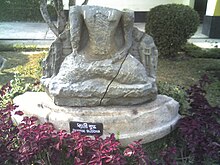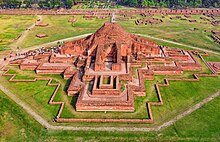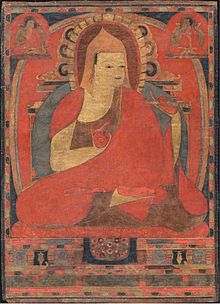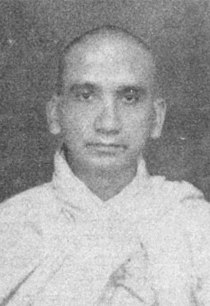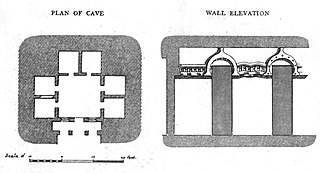
Vihāra generally refers to a Buddhist monastery for Buddhist renunciates, mostly in the Indian subcontinent. The concept is ancient and in early Sanskrit and Pali texts, it meant any arrangement of space or facilities for dwellings. The term evolved into an architectural concept wherein it refers to living quarters for monks with an open shared space or courtyard, particularly in Buddhism. The term is also found in Ajivika, Hindu and Jain monastic literature, usually referring to temporary refuge for wandering monks or nuns during the annual Indian monsoons. In modern Jainism, the monks continue to wander from town to town except during the rainy season (Chaturmas), and the term "vihara" refers to their wanderings.

The Marma, also known as Moghs, Mogs or Maghs, are the second-largest ethnic community in Bangladesh's Chittagong Hill Tracts, primarily residing in the Bandarban, Khagrachari and Rangamati Hill Districts. Some Marmas live in Bangladesh's coastal districts of Cox's Bazar and Patuakhali, while others live in Tripura, India and Myanmar. There are about 224,261 Marmas living in Bangladesh and 35,722 of them living in India. Since the 16th century, the Marma have considered the Bengal's Chittagong Hill Tracts their home, where they have established the Bohmong and Mong Circles (chiefdoms).

Bandarban is a district in South-Eastern Bangladesh, and a part of the Chittagong Division. It is one of the three hill districts of Bangladesh and a part of the Chittagong Hill Tracts, the others being Rangamati District and Khagrachhari District. Bandarban district (4,479 km2) is not only the most remote district of the country, but also the least populous. There is an army contingent at Bandarban Cantonment.

Naogaon District is a district in northern Bangladesh, part of the Rajshahi Division. It is named after its headquarters, the city of Naogaon in Naogaon Sadar Upazila.
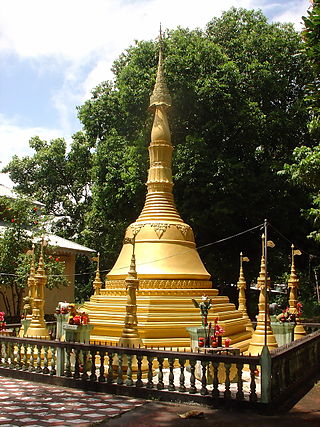
The Barua, are an ethnic group native to Chittagong Division in Bangladesh, Rakhine State in Myanmar, where they are known as the Maramagyi or Maramagri, and parts of Assam, West Bengal and Tripura in northeast India. According to Arakanese chronology, the Barua Buddhists have lived there for five thousand years. Another derivation of 'Barua' is 'Baru' and 'Arya' meaning great arya. They are commonly identified by their last name, "Barua". Barua is derived from "Baru" meaning "great" and "ua", meaning "noble rulers". In Myanmar, the Barua is classified as one of the seven groups that make up the Rakhine nation. Originally, the Barua title is of Assamese origin.

Somapura Mahavihara or Paharpur Buddhist Vihara in Paharpur, Badalgachhi, Naogaon, Bangladesh is among the best known Buddhist viharas or monasteries in the Indian Subcontinent and is one of the most important archaeological sites in the country. It was designated as a UNESCO World Heritage Site in 1985. It is one of the most famous examples of architecture in pre-Islamic Bangladesh. It dates from a period to the nearby Halud Vihara and to the Sitakot Vihara in Nawabganj Upazila of Dinajpur District.
Prajnalok Mahasthavir (1879–1971) was a scholar, writer and orator of Pali and a preacher, educationist and writer of Buddhism.

Jagaddala Mahavihara was a Buddhist monastery and seat of learning in Varendra, a geographical unit in present north Bengal in Bangladesh. It was founded by the later kings of the Pāla dynasty, probably Ramapala, most likely at a site near the present village of Jagdal in Dhamoirhat Upazila in the north-west Bangladesh on the border with India, near Paharapur. Some texts also spell the name Jaggadala.

The Buddha Dhatu Jadi is located close to Balaghata town, in Bandarban City, in Bangladesh. Dhatu are the material remains of a holy person, and in this temple the relics belong to Buddha. It is the largest Theravada Buddhist temple in Bangladesh and has the second-largest Buddha statue in the country.

Rajguru Aggavamsa Mahathera was one of the delegates from Bangladesh) in the Sixth Buddhist council held in Yangon, Burma in 1956.
Venerable Kripasaran Mahathera was a 19th and 20th century Bengali Buddhist monk and Indian yogi, best known for reviving Buddhism in British India. Kripasaran led a renaissance of Buddhist thought and culture in nineteenth century India.

Bikrampur Vihara is an ancient Buddhist vihara at Raghurampur village, Bikrampur, Munshiganj District, Dhaka division in Bangladesh.
Mahavihara is the Sanskrit and Pali term for a great vihara and is used to describe a monastic complex of viharas.

Prajnananda Mahathera is a socially engaged Buddhist monk in Chittagong Hill Tracts (CHT) of Bangladesh.

Bengali Buddhists are a religious subgroup of the Bengalis who adhere to or practice the religion of Buddhism. Bengali Buddhist people mainly live in Bangladesh and Indian states West Bengal and Tripura.

Ven. U Pannya Jota Mahathera, locally known as Guru Bhante, was a Bangladeshi Theravada monk. He was born in a Royal Bohmong family at Bandarban, East Pakistan. He served the government of Bangladesh as a judge and magistrate for about eight years prior to becoming a Buddhist monk.

Bangladesh Bauddha Kristi Prachar Sangha is a political and social organization that works for the welfare of the Buddhist community of Bangladesh.
The Indian subcontinent has a long history of education and learning from the era of Indus Valley civilization. Important ancient institutions of learning in ancient India are Takshashila, Kashmir Smast, Nalanda, Valabhi University, Sharada Peeth, Pushpagiri Vihara, Odantapuri University, Vikramashila, Somapura Mahavihara, Bikrampur Vihara, Jagaddala Mahavihara.



